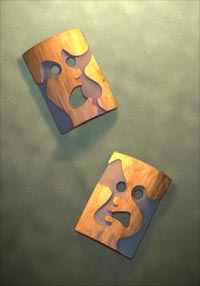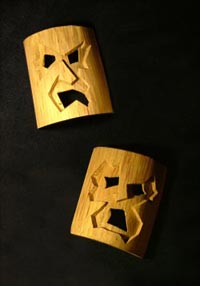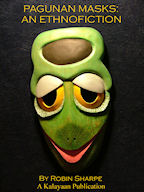The small, so-called demon child or brat masks are probably the most quintessentially Pagunan of all masks. The demon name was first applied by the missionaries, the Pagu themselves did not take demons or devils very seriously, and called them brat masks. The masks were a recognition that young children are not only critical of and rebel against authority but also that this is expected of them. To wear these masks was to take on the role more formally. At performances the brat children would heckle, harass and make fun of other performers often using obscene gestures, something the Pagu who saw such things differently, enjoyed immensely. The brat dancers were not allowed to physically interfere with the other performers or drown out their words, although they could use their whips and canes lightly. Being a brat child was challenging. They were expected to use style and wit, and be entertaining in their harassment. They were also performers and would be criticized if they performed in a clumsy, stupid manner. For that and other reasons they might be confronted and carried off by crone or skull face dancers. Schwartz saw them as a reflection of the enhanced status of, and respect for the young emerging from the Great Cataclysm.


